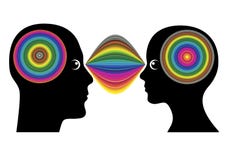

When we walk from one place to another, speak to another person in English, dial a cell phone, or play a video game, we are using procedural memory.

DIFFERENCE BETWEEN EIDETIC MEMORY AND PHOTOGRAPHIC MEMORY HOW TO
Procedural memory refers to our often unexplainable knowledge of how to do things. As you can see in Figure 8.2 “Types of Memory”, there are three general types of implicit memory: procedural memory, classical conditioning effects, and priming. Implicit memory refers to the influence of experience on behavior, even if the individual is not aware of those influences. However, implicit memory is nevertheless exceedingly important to us because it has a direct effect on our behavior. While explicit memory consists of the things that we can consciously report that we know, implicit memory refers to knowledge that we cannot consciously access. Relearning also allows us to measure memory for procedures like driving a car or playing a piano piece, as well as memory for facts and figures. Relearning can be a more sensitive measure of memory than either recall or recognition because it allows assessing memory in terms of “how much” or “how fast” rather than simply “correct” versus “incorrect” responses. But if you were to work on your French again, you’d learn the vocabulary much faster the second time around. If you have taken some French courses in the past, for instance, you might have forgotten most of the vocabulary you learned. Measures of relearning (or savings) assess how much more quickly information is processed or learned when it is studied again after it has already been learned but then forgotten. Students who do better on a multiple-choice exam will also, by and large, do better on an essay exam (Bridgeman & Morgan, 1996).Ī third way of measuring memory is known as relearning (Nelson, 1985). Although they involve different processes, recall and recognition memory measures tend to be correlated. Recognition, as on multiple-choice test, only involves determining which item from a list seems most correct (Haist, Shimamura, & Squire, 1992). Recall, such as required on essay tests, involves two steps: first generating an answer and then determining whether it seems to be the correct one. Your own experiences taking tests will probably lead you to agree with the scientific research finding that recall is more difficult than recognition. A multiple-choice test is an example of a recognition memory test, a measure of explicit memory that involves determining whether information has been seen or learned before. We rely on our recall memory when we take an essay test, because the test requires us to generate previously remembered information.

A recall memory test is a measure of explicit memory that involves bringing from memory information that has previously been remembered. Explicit memory is assessed using measures in which the individual being tested must consciously attempt to remember the information.


 0 kommentar(er)
0 kommentar(er)
